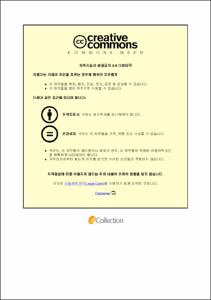파라미터 및 조영제 시기에 따른 CT를 통해 측정한 근육 구성요소측정의 신뢰도 연구
- Abstract
- 연구배경
근감소증 및 지방근증을 평가하는데 있어서 전산화단층촬영 (CT)가 효과적인 비침습적 검사로 쓰이고 있다. 그러나 CT 파라미터 및 조영제 시기 및 투여 유무에 따른 측정치의 신뢰도는 잘 밝혀져 있지 않다.
연구목적
본 연구에서는 다양한 CT 파라미터를 사용하였을 때 근육의 양과 질 평가에 있어서 CT의 신뢰도를 평가하고자 한다.
연구방법
파라미터에 따른 신뢰도를 측정하기 위하여 요추 2–4번의 복부에 해당하는 팬텀을 이용하였다. 이 팬텀을 이용하여 CT의 전압, 전류, 두께 및 영상 재구성 알고리듬을 변경하면서 CT 영상을 획득하였다. 근육 참조치는 팬텀의 근육 양 및 추정 근감쇄도 (45 HU)를 참조하였다. 또한 조영제 시기에 따른 CT 근육평가의 신뢰도를 측정하기 위해 4개의 다른 시기 (조영전, 동맥기, 문맥기, 지연기)에 CT 영상을 획득한 89명의 환자를 포함하였다. 근육 참조치는 인공지능을 통해 얻은 근육의 양 및 평균 근감쇄도를 이용하였다. 근육의 근감쇄도에 따라 골격근 영역 (SMA, -29에서 150 HU), 정상근감쇄도근육 영역 (LAMA, 30에서 150 HU), 저근감쇄도근육영역 (LAMA, -29 에서 29 HU)으로 나누었고, 각 파라미터 및 조영시기에서 해당하는 영역의 값 및 평균 근육감쇄도를 구하였다.
연구결과
팬텀을 통해 구한 SMA는 CT 파라미터와 관계 없이 참조치의 91.7% 이상을 차지하였다. 그러나 정상근감쇄도 영역은 59.7–81.7%로 다양한 값을 보였다. 평균 근감쇄도는 추정 근감쇄도보다 낮게 측정되었다. 조영증강시기에 따라 SMA, NAMA, LAMA는 유의한 차이를 보였다. 그러나 SMA를 기반으로 한 근감소증 진단에는 영향이 크지 않았다.
결론
근육 양 평가는 CT 파라미터 및 조영증강 시기에 관계없이 신뢰도 있는 결과값을 구하였다. 그러나 근육 질 평가의 경우 CT 파라미터와 조영증강 시기에 많은 영향을 받았고 따라서 표준화된 파라미터 및 조영증강 시기에 대한 확립이 필요하겠다.
|Objectives: To evaluate the reliability of the measurement of muscle quantity and quality under variable CT parameters and contrast phase.
Materials and Methods: In a phantom simulating the L2–4 vertebrae levels was used, CT images were repeatedly obtained with modulation of tube voltage, tube current, slice thickness, and image reconstruction algorithm. In 89 consecutive human subjects (mean age [range], 52.2 [28–79] years; 52 mean), CT images with four different phases (pre-contrast, arterial, portal, and delayed phases) were obtained after the contrast agent administration. Reference standard muscle compartments were segmented using reference maps (phantom) and deep learning algorithms (human subjects). Cross-sectional area based on the Hounsfield unit (HU) thresholds of skeletal muscle area (SMA; threshold, -29–150 HU) and its components including normal attenuation muscle area (NAMA; threshold, 30–150 HU) and low attenuation muscle area (LAMA; threshold, -29 to 30 HU), and the mean density were both used to measure the muscle quantity and quality with the different protocols and contrast phase. Signal-to-noise ratio (SNR) were calculated in the images acquired with different settings.
Results: SMA occupied at least 91.7% of the reference standard muscle compartment regardless of the CT parameters. Conversely, NAMA was not constant across the different CT parameters, varying between 59.7–81.7% of the reference standard muscle compartment. The mean density was lower than the target density stated by the manufacturer (45 HU) in all cases (range, 39.0–44.9 HU) regardless of the CT parameters. Regarding the contrast phase, there was significant difference in area and mean HU of SMA, NAMA, and LAMA. Nevertheless, difference in area and its adjusted indices of SMA did not clinically change the number of patients with sarcopenia.
Conclusions: The measurement of muscle quantity using HU threshold was reliable, regardless of the CT parameters, and clinically acceptable methods regardless of the contrast phase. Conversely, the measurement of muscle quality using the mean density and a narrower HU threshold was inconsistent and inaccurate according to the different CT parameters and contrast phases.
- Issued Date
- 2021
- Awarded Date
- 2021-02
- Type
- Dissertation
- Alternative Author(s)
- Dong Wook Kim
- Affiliation
- 울산대학교
- Department
- 일반대학원 의학전공
- Advisor
- 김경원
- Degree
- Doctor
- Publisher
- 울산대학교 일반대학원 의학전공
- Language
- kor
- Rights
- 울산대학교 논문은 저작권에 의해 보호받습니다.
- Appears in Collections:
- Medicine > 2. Theses (Ph.D)
- 파일 목록
-
-
Download
 200000365590.pdf
기타 데이터 / 992.16 kB / Adobe PDF
200000365590.pdf
기타 데이터 / 992.16 kB / Adobe PDF
-
Items in Repository are protected by copyright, with all rights reserved, unless otherwise indicated.